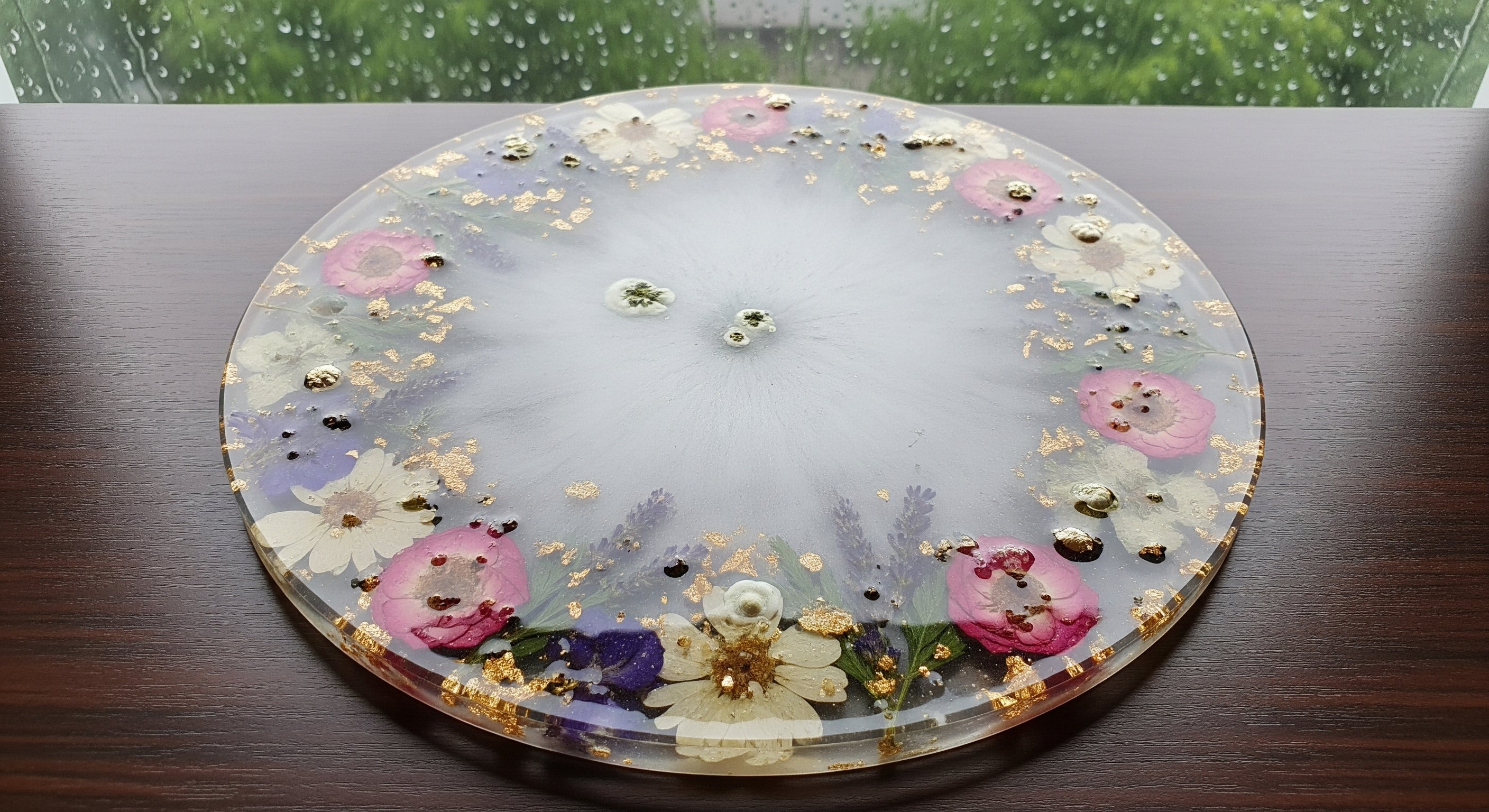There’s nothing like a good chai and resin-pouring session while it’s drizzling outside. But the same monsoon that brings poetic vibes also brings trouble. If you’ve ever wondered why your resin art suddenly turns into a cloudy, tacky, sticky mess during the rainy season, you’re not alone. Monsoon + resin = the ultimate frenemy duo.
Before you panic and swear off crafting till winter, let’s break down what’s happening and, more importantly, how you can fix it. Because yes, it can be fixed and no, you don’t need to move to Rajasthan.
Why Does Resin Misbehave During Monsoon?
The answer is simple: humidity and moisture.
Monsoon air is full of excess moisture and that moisture loves to interfere with your resin game. Even if your room feels dry, the invisible water content in the air can ruin the chemical bond between resin and hardener. This can lead to:
-
Cloudy or milky finishes
-
Tacky or oily texture even after hours of curing
-
Bubbles that refuse to go away
-
Delayed or uneven curing
In short, your masterpiece ends up looking like a failed science project. But worry not, we’re going to change that.
Your Resin-Saving Monsoon Toolkit
Let’s talk about fixes. Here are tried and tested ways to work with resin during monsoon without losing your mind or your artwork.
1. Keep the Room Warm (Yes, Even if It's Muggy)
Moisture and cold air slow down resin curing. Aim to keep your crafting area at a temperature of 28–30°C. If you have an AC, turn it on and let the room stabilize before you begin.
2. Use a Mini Heater or Blower
No AC? No problem. A small room heater or hot air blower placed safely near your working surface will dry out ambient moisture. Just make sure it’s not blasting directly onto the wet resin.
3. Warm Up Your Resin and Hardener Bottles
Place your resin and hardener bottles in a bucket of warm water for 10 minutes before mixing. This helps:
-
Improve flow and consistency
-
Reduce the chances of air bubbles
-
Kickstart the curing process with warmth
Important: Wipe the bottles dry before opening to avoid water droplets entering your mix.
4. Add a Yellow Bulb Over Your Workspace
Surprising, but true: a warm yellow incandescent bulb above your work area creates a dry micro-environment and gently warms the top resin layer. This helps avoid the dreaded cloudy effect.
5. Use a Blow Torch Smartly
After pouring your resin, run a blow torch lightly and frequently over the surface. This pops bubbles and prevents clouding. During monsoons, keep checking your artwork for 4–5 hours post-pour and torch again if needed.
Extra Pro Tips from Resin Artists
Here are a few additional tricks experienced artists swear by:
-
Dehumidifier: If you live in a coastal city or the monsoon lasts longer than your patience, invest in a small dehumidifier for your room.
-
Avoid Fans While Curing: A fan can carry dust and moisture right into your art. Let your resin cure in a closed, still environment.
-
Seal with Plastic Tent: Craft inside a makeshift plastic enclosure (like those mini grow tents). It maintains temperature and blocks external humidity.
-
Avoid Thick Pours: Stick to thinner layers during monsoons; thicker pours are more prone to uneven curing in humid weather.
To Conclude
Monsoon may mess with your schedule, your laundry and your travel plans, but it doesn’t have to ruin your resin art. All you need is a few adjustments to your setup and a little extra attention to temperature and moisture.
With these tips, you won’t just survive the monsoon; you’ll thrive through it. That cloudy resin disaster? Let it be a thing of the past.
And if you need resin that's trusted by thousands of artists or are looking for moulds, pigments, or tools that play well with monsoon madness, Tulsi Resin has your back with everything you need to keep your art (and mood) flowing smoothly.


Product by Kajal Agarwal
Think It's Just Clay and Hands? Think Again. Here's Why Tools Can Make or Break Your Clay Art